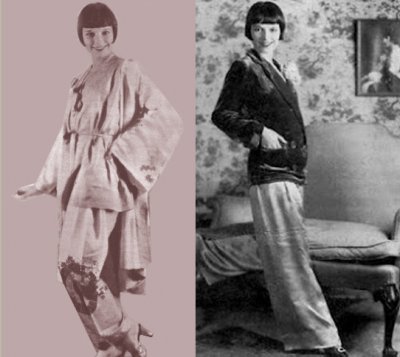zaika
One Too Many
- Messages
- 1,480
- Location
- Portlandia
Hi ladies! It's uh, been awhile since I've been here on the FL, but I remembered what a powerful hivemind is here and thought I'd pick your collective brain. Hopefully I've chosen the correct room...
I'm just curious about what you know about late 1920's fashion/trends when it comes to women who chose to not dress in...well, dresses. You know, the women who didn't really like the trappings of being a woman and chose to dress like it. I've found some information out there and photos, but I want to know more and I can't seem to find the right key words or phrases to find more. What was commonly worn by women who didn't really like the fuss of being a woman? What was the stigma of not dressing "like a lady?" Was it common for women to wear slacks as much as dresses? What kind of woman (economic status, social standing, sexual orientation, education, etc) commonly chose this style of dress?
Are my questions fairly clear? :noidea:
I've been doing my own research into this topic, but I'm curious what YOUR thoughts are on the subject and where you've found this kind of information. Websites, books, search words....anything.
Thanks ladies!
I'm just curious about what you know about late 1920's fashion/trends when it comes to women who chose to not dress in...well, dresses. You know, the women who didn't really like the trappings of being a woman and chose to dress like it. I've found some information out there and photos, but I want to know more and I can't seem to find the right key words or phrases to find more. What was commonly worn by women who didn't really like the fuss of being a woman? What was the stigma of not dressing "like a lady?" Was it common for women to wear slacks as much as dresses? What kind of woman (economic status, social standing, sexual orientation, education, etc) commonly chose this style of dress?
Are my questions fairly clear? :noidea:
I've been doing my own research into this topic, but I'm curious what YOUR thoughts are on the subject and where you've found this kind of information. Websites, books, search words....anything.
Thanks ladies!
